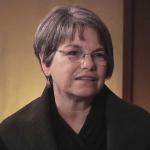Key features of macroeconomics that originated in US military-funded research on applied mathematics in the 1950s and 1960s included recursive optimization taking uncertainty into account, agents modeled as collections of decision rules, and the certainty equivalent and equilibrium modeling strategies. The modeling strategies that opened the door to economists’ agile underpinning of macroeconomics with microfoundations had their own foundation in empirical microeconomics. In the 1950’s the United States Air Force Project SCOOP (Scientific Computation of Optimum Programs) and the Office of Naval Research awarded contracts to establish and maintain a research center for the Planning and Control of Industrial Operations at the Graduate School of Industrial Administration of the Carnegie Institute of Technology in Pittsburgh. Faced with client demands for computable decision rules that would minimize costs in the face of uncertain demand, the Carnegie team reverse engineered effective computational protocols to derive optimal forms and properties. They also developed procedures to narrow the modeling choices in dynamic programming. The formal analysis of the statistical and mathematical properties of bridges connecting the rational with the computable formed a modeling self- consciousness and channeled a new disciplinary focus on modeling strategies. The rational expectations theorists built on the modeling strategies that had been fabricated for planning in their attempt to bridge aggregative economics with the optimizing behavior of the individual and the clearing capacities of markets. The state-transition models that in the 1970s gave macroeconomists a framework for recursive optimization with uncertainty had similarly transformed control engineering in the 1960s. In both disciplines a “modeling-strategy turn” narrowed the primary analytical focus to the properties of mathematical models with less emphasis on the phenomena being modeled.
Keywords: modeling strategy, bounded rationality, rational expectations, forecasting, dynamic programming, empirical microeconomics, macroeconomics, operations research, history of economics, Herbert E. Simon, John F. Muth, Carnegie Institute of Technology
